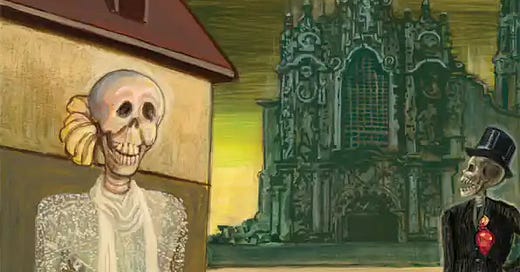Chasing the Ghosts of San Diego’s Past in "Drift"
Jim Miller Reads from his Novel at the Downtown Central Library and The Book Catapult
Cover painting by Perry Vazquez
In 2007, the year that the hardcover edition of Drift appeared, I had the great pleasure of meeting Oakley Hall, the dean of West Coast writers and a rare San Diego literary legend. I first encountered Hall at D.G. Wills Books in La Jolla where he came to read from his last novel, Love and War in California, which I did a featured review of for the San Diego Union-Tribune. Later that Fall, I had the good fortune of hosting Hall, then 86-years-old, when he read at a book fair I directed at San Diego City College only months before his death in May of 2008.
I had always been intrigued by Oakley Hall’s work because both in his last novel and in his seminal San Diego book, Corpus of Joe Bailey, he seeks to represent a city that cultural critic David Reid has observed “cannot represent itself, and is barely represented by others.”
Indeed, Hall’s novels about San Diego seek to document a city that, as Herbert Gold notes in his introduction to the reprint of Corpus has “now disappeared.” Oakley observed as much when, after going on a long walk downtown before his reading at the City College bookfair, he said, smiling ruefully, “It’s all gone. Nothing I remember is still there.”
This conversation still resonates after 17 years because in the two decades since I began researching and writing Drift, which was the product of sets of meticulous notes and historical research that eventually birthed both the novel and the radical history of San Diego I co-authored with my wife, Kelly Mayhew, and Mike Davis, Under the Perfect Sun: the San Diego Tourists Never See, the hypergentrification that San Diego has undergone has erased a large portion of the urban landscape portrayed in the book.
Thus, reading Drift today is an exercise in chasing the ghost of a city that no longer exists.
In seeking to make sense of how one can still hold onto a connection to place, to home, in a time when the financialization of real estate has transformed urban spaces across America, pricing out and/or forcibly relocating myriads of us while brutally pushing a record number of our neighbors into homelessness, Drift tells not just a distinctly San Diego story but a tale that many readers might recognize in cities across the United States and internationally.
Joe Blake, the protagonist in Drift, laments how the theme-parking of urban space erases the thereness of our cities and buries history in the service of homogenizing commerce. But, at its core, the novel asks the even more fundamental question of how we can all live together more harmoniously, justly, and beautifully, rooted in place.
At its original launch in 2007, the novel got a friendly reception in the pages of the San Diego Union-Tribune where Seth Taylor wrote that I was “the right tour guide” for a trip to our city’s dark side:
Local writer Jim Miller established himself as that guy long before now, as co-author of the book ‘Under the Perfect Sun: The San Diego Tourists Never See,’ a triptych of essays describing our fair city's less attractive side, from corruption and graft in City Hall to continued segregation and racial strife. In short, stuff not normally mentioned over the loudspeakers on those ubiquitous orange trolleys perpetually rolling through the city . . . Miller has taken his passion and political sensibility into fiction with his debut novel ‘Drift,’ a bittersweet valentine to San Diego, a city he clearly still loves – and mourns. ‘Drift’ tells the story of one character's restless wanderings . . . while also giving us glimpses of local eccentrics from his periphery who have their own San Diego stories to tell.
I’ll be reading from and discussing Drift at the downtown Central Library on Monday, March 18th at 6:30 (for details and to RSVP go here) and on Friday, March 22nd at 7 at The Book Catapult in South Park (for details go here).



